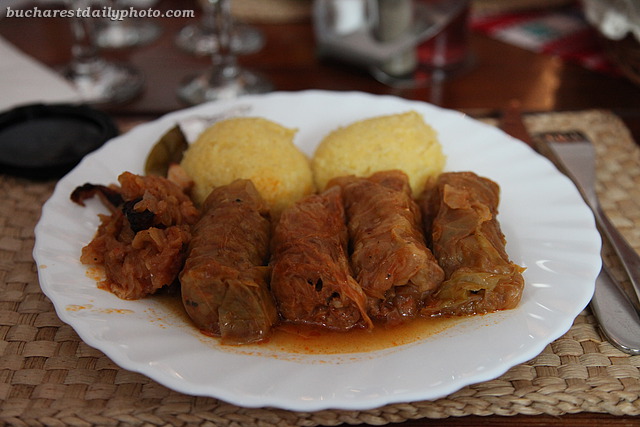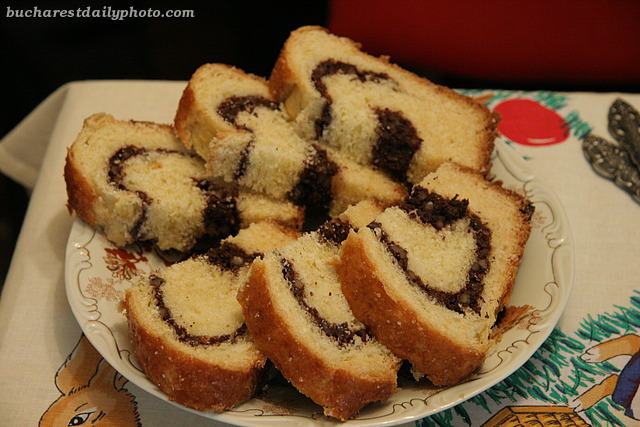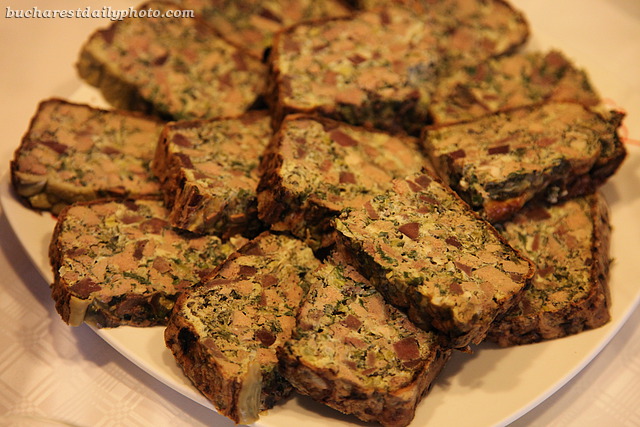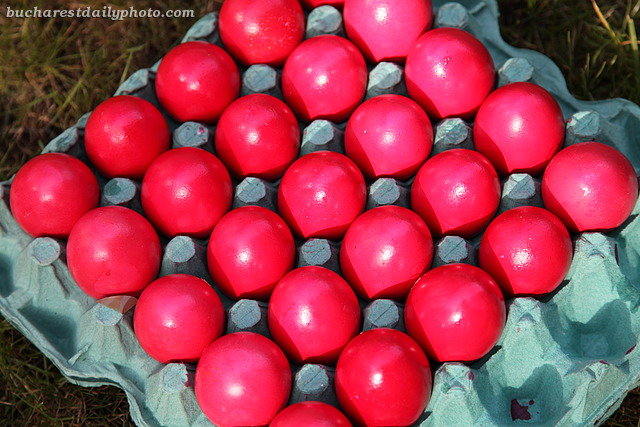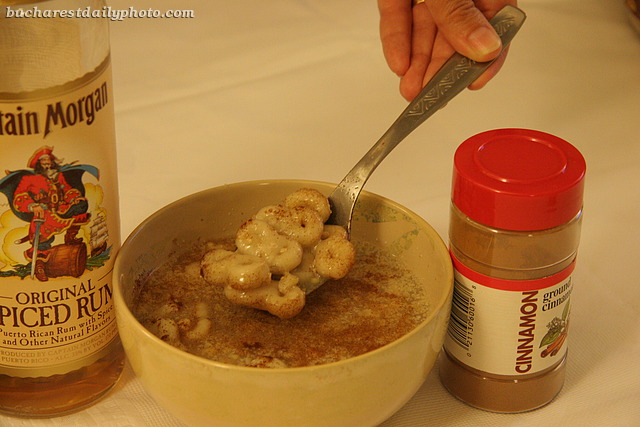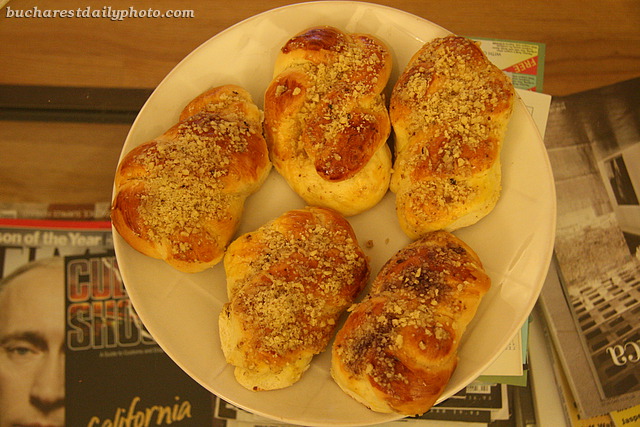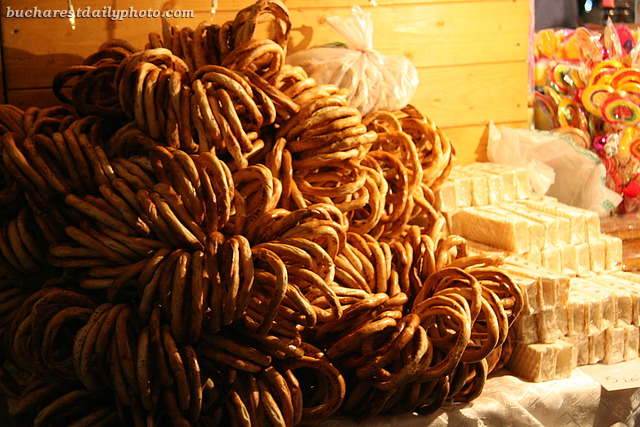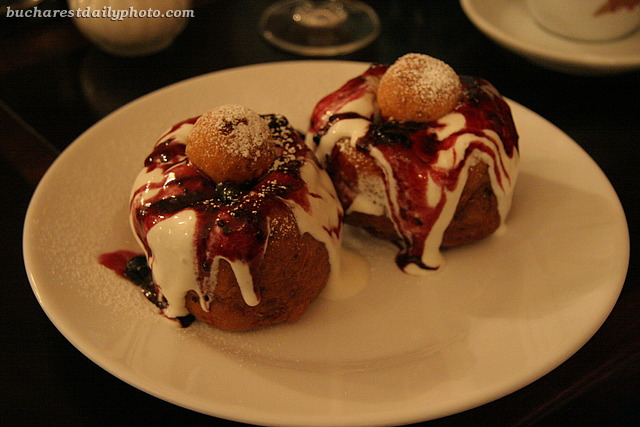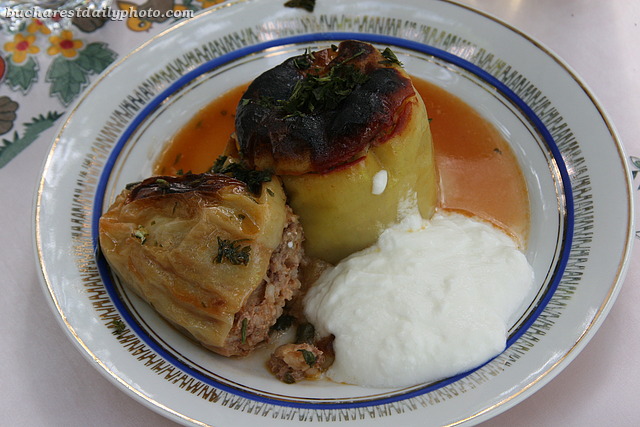Every time I come back to Bucharest after a long absence I go through the same ritual of doing the things I’ve been missing while away: meet with friends & family, drop by my favorite bookstore to see the new releases, eat my favorite Romanian dishes. Which was why I couldn’t wait to get to Bucharest at the end of December to have a plate of the dish shown in today’s photo. The dish is called “sarmale” (plural) or “sarma” (singular), and if you were visiting Romania and asked someone to recommend you something traditional you would probably be told to try this dish. While considered traditional, sarmale is not originally Romanian and variations of the dish exits, according to this article on wikipedia, “in the cuisines of the former Ottoman Empire from the Middle East to the Balkans and Central Europe”. Sarmale consist of grape or cabbage leaves rolled around a filling usually based on minced meat. There’s also a “vegan” version of the dish in which the filling is made of rice and which people usually eat when fasting before religious holidays. In Romania sarmale is usually served with polenta (mămăligă in Romanian) and sour cream or yogurt and is traditionally served for Christmas and New Year. And since I arrived in Bucharest the day before Christmas you can imagine that by now I’ve had my share of sarmale. Pretty yummy but I probably won’t feel like eating it again for the next month or two.
The other highlight of the Easter meal, from my point of view, is this traditional dessert, called cozonac which, as I discovered, has it own wikipedia page. It’s traditionally prepared for every major holiday (Christmas, Easter, New Year) and in taste is similar to the Italian Panettone. It’s not easy baking a good cozonac. My grandmother used to bake a very good one but unfortunately the tradition stopped with her: my mom never got it right and I never tried to bake one. Only reading the recipe makes me want to give up 🙂
Most of the dishes we prepare for the Easter meal are made of lamb, including this traditional Easter appetizer called drob which is made using lamb organs: heart, kidneys, liver. It’s a bit similar to a meatloaf. It’s one of my favorites and I can’t have enough of it, especially considering that I’m only eating it once a year. I looked for lamb drob recipes on the web and found plenty of sources (for example this one or this one). I also discovered that this dish can be found in Bulgaria as well.
This was my second choice for yesterday’s Theme Day: Easter eggs colored by my mother-in-law, to be enjoyed on Sunday.
Another day, another celebration 🙂 This one is called Mucenicii in Romanian, which translates as the Martyrs of Sebaste. It’s a religious holiday, celebrating the martyrdom of 40 Roman soldiers who confessed their believe in the Christian faith and were condemned to be left naked into an ice covered pond near the city of Sebaste in Armenia, on a cold winter night, so they might freeze to death. The way we celebrate this in Romania is with a feast day, by preparing a special dish in the honor of the martyrs. It’s the only time of year I get to eat this dish and even if it’s not much, not a very sophisticated affair, I really like it. The dish bears the name of the celebration – “mucenici” – and can be prepared in two ways. The ones shown in the photograph above are the kind we prepare in the south of Romania. The dish consists of pieces of dough shaped as number 8 which we boil in water, adding sugar, cinnamon, ground walnuts and a bit of rum. In the northeast of Romania, in Moldova, they bake the dough and glaze it with honey and walnuts and you can see the result in the picture below. They’re quite yummy and I can’t wait to eat them today. I’ll have to excuse myself for the quality of the photos. They’re from my archives and back when I took them I thought I was taking them for myself so I didn’t pay too much attention to framing or setting up the scene.
The round snack that you see in today’s photo is a Romanian favourite. They are made of flour, yeast, malt, salt and water and can be sprinkled with poppy seed or sesame. They can be either round shaped (like in today’s photo) or shaped like a smaller pretzel (I promise to show you a photo soon). In Romanian they are called “covrigi” (singular “covrig”). They are so popular that there are bake shops whose only purpose is to manufacture and sell covrigi. This kind of bake shops are called “covrigărie”. Covrigi make for a filling snack and cost very little and for this reasons some people call them “the food of the poor”. But I’ve seen all sorts of people queuing up to buy covrigi because the smell of a freshly baked covrig is something hard to resist. The ones in today’s photo are not freshly baked but they have their charm too: they go well with beer 🙂
Since yesterday I talked about a serious subject I decided that today it is time for something lighter. And sweeter 🙂 Looking through my collection of photos I found this photo of “papanaşi” (a plural, because you are usually served two), one of my favorite Romanian desserts. They are dumplings filled with cottage cheese, fried and served with a dollop of jam and sour cream. You can get them at many restaurants in Bucharest. They are made to order so if you decide to try them, you might have to wait 20 minute until they are ready. It’s a heavy dessert so you must make sure to save enough space. I recommend them with all my heart. Be careful, you might gain weight only by looking at them.
P.S. Writing this post made me want to eat some papanaşi 🙂
I lived outside Romania for a few years and during that time I was told by my friends of different nationalities that their impression of Eastern European food is that it involves a lot of sour cream. I have to agree that this impression is partially true and in order not to dissapoint my friends, I decided to post a photo of one of my favorite Romanian dishes which is usually served with sour cream. The “stuffed peppers” (ardei umpluţi in Romanian) is an Eastern European dish consisting of peppers filled with a mixture of ground meat, rice, onions and other spices, boiled in a tomato sauce. You can find it in different variations in all countries in Eastern Europe. In Romania we also have a vegetarian version from which the meat is absent.
